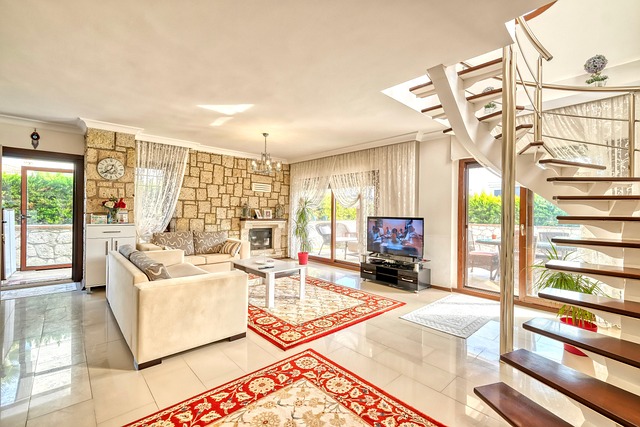Assisted Living Latham: Enhance Daily Life with Expert Support

Assisted Living Latham provides supportive senior housing with personalized care, focusing on independence and quality of life. Facilities accept Medi…….
In the rapidly evolving landscape of senior care, Assisted Living Latham has emerged as a transformative model, redefining the way we support and care for aging populations. This innovative approach blends advanced technologies, personalized assistance, and community-centric design to create enhanced living environments for residents. The concept leverages modern solutions while addressing the unique needs of individuals who require assistance with daily tasks but desire autonomy and engagement in their later years.
This article aims to provide an exhaustive exploration of Assisted Living Latham, delving into its definition, global impact, economic implications, technological contributions, regulatory framework, challenges, real-world applications, and future prospects. By the end, readers will have a comprehensive understanding of this dynamic field and its potential to shape the future of senior living.
Assisted Living Latham (ALL) is a specialized housing model designed to offer support and assistance to adults who need help with daily activities but wish to maintain an independent lifestyle. It combines traditional assisted living services with cutting-edge technology, creating a seamless blend of care and autonomy. ALL facilities are equipped with smart sensors, automated systems, and staff trained in modern caregiving practices, ensuring a safe and stimulating environment for residents.
Residential Design: Spacious, comfortably furnished units cater to individual preferences, promoting a sense of home. Common areas encourage social interaction and engagement.
Technology Integration: Smart homes equipped with sensors monitor vital signs, movement, and safety. These systems alert staff and family members in case of emergencies or unusual activity.
Personalized Care Plans: Tailored care approaches consider residents’ physical, emotional, and social needs, promoting their overall well-being.
Community Engagement: ALL facilities organize social activities, workshops, and events to foster a sense of belonging and purpose among residents.
The concept of ALL evolved from the recognition that traditional assisted living could be enhanced through technology integration. Early experiments focused on using smart sensors for safety monitoring, leading to significant improvements in resident well-being. Over time, these innovations expanded to include comprehensive care management systems and personalized digital assistance, shaping the ALL model as we know it today.
Assisted Living Latham has left a profound impact on global senior care, with adoption rates accelerating across diverse regions.
Urbanization of Aging Populations: Cities worldwide are experiencing a rapid aging of their populations, driving the demand for ALL-style facilities that cater to urban living preferences.
Technology Acceptance: The digital revolution has made older adults more comfortable with technology, creating an environment ripe for ALL’s integration of smart home systems and digital care management tools.
Personalized Care Demand: There is a growing need for tailored care options as individuals seek support that aligns with their unique lifestyles and preferences.
North America: Leading the way in ALL adoption, North American countries like the United States and Canada have seen significant investments in technology-driven senior care. Innovative startups and tech giants are developing cutting-edge solutions, shaping the global ALL landscape.
Europe: European nations have embraced ALL concepts, focusing on integrating smart home technologies to enhance safety and independence. The UK, Germany, and France are notable for their progressive policies and successful pilot projects.
Asia: With rapidly aging populations, Asian countries like Japan, South Korea, and China are investing heavily in ALL. These regions prioritize technological advancements to address the unique challenges of an aging society.
The Assisted Living Latham industry operates within a complex economic ecosystem, with various market dynamics influencing its growth and development.
Demographic Shifts: Aging populations worldwide drive the demand for ALL facilities, creating a favorable market environment.
Healthcare Cost Concerns: Governments and families are increasingly seeking cost-effective alternatives to traditional long-term care, making ALL an attractive option.
Technology Integration Costs: Initial setup and maintenance costs for smart home systems can be high, but they are offset by reduced operational expenses in the long term.
Private Equity and Venture Capital: ALL startups often attract investments from private equity firms and venture capitalists who recognize the industry’s growth potential.
Government Funding: Many governments provide financial incentives, grants, and subsidies to encourage the development of ALL facilities, particularly in areas with limited senior care options.
ALL contributes significantly to local economies by creating employment opportunities, generating tax revenue, and stimulating construction activities. It offers a sustainable solution for long-term care, potentially reducing societal costs associated with more intensive healthcare services.
Technology is at the heart of Assisted Living Latham‘s success, driving innovation and enhancing the overall resident experience.
Internet of Things (IoT) Devices: Smart sensors monitor environmental conditions, detect falls, track medication intake, and provide real-time data for staff and families.
Artificial Intelligence (AI): AI algorithms analyze data to predict resident needs, automate routine tasks, and support personalized care planning. Chatbots offer 24/7 digital assistance.
Virtual and Augmented Reality (VR/AR): These technologies enhance therapy sessions, provide cognitive stimulation, and enable virtual social interactions for isolated residents.
Robotics: Robotic assistants perform various tasks, from delivering meals to providing companionship, allowing staff to focus on more complex care needs.
Improved Safety and Monitoring: IoT devices enhance resident safety by alerting staff to potential hazards, enabling prompt intervention.
Personalized Care: AI algorithms can tailor care plans based on individual preferences and health data, ensuring a more comfortable and effective living environment.
Enhanced Social Connections: VR/AR technologies bridge social gaps, allowing residents to engage in activities that might otherwise be inaccessible due to mobility issues or geographical constraints.
Cost Efficiency: Robotics can reduce operational costs by automating certain tasks and providing round-the-clock assistance.
The Assisted Living Latham industry is subject to a range of policies and regulations that vary significantly across jurisdictions, impacting its development and operation.
Healthcare Regulations: ALL facilities must adhere to strict healthcare standards and licensing requirements set by local or national health departments. These ensure safe and hygienic living conditions.
Privacy and Data Protection Laws: With the collection of vast amounts of resident data, privacy regulations like GDPR (General Data Protection Regulation) in Europe and HIPAA (Health Insurance Portability and Accountability Act) in the US are crucial to protect sensitive information.
Employment and Labor Laws: These govern staff hiring, working conditions, and compensation, ensuring fair treatment for ALL facility employees.
Building Codes and Safety Standards: Construction and design must meet local codes and standards to ensure safe and accessible living spaces.
Rapid Technological Changes: Keeping up with technological advancements can be challenging, as regulations often lag behind innovation. Regular policy reviews are necessary to accommodate new ALL technologies.
Data Security Concerns: As ALL relies heavily on data collection, ensuring the security of resident information is paramount. Data breaches can have severe consequences, necessitating robust cybersecurity measures.
Legal Variability Across Regions: Different countries and states may have distinct regulations, creating a complex legal landscape for ALL operators aiming for global expansion.
Despite its many benefits, Assisted Living Latham faces several challenges and criticisms that require strategic solutions to ensure its sustainable growth and widespread adoption.
High Initial Investment: Setting up ALL facilities involves substantial capital expenditure for technology infrastructure, which can deter potential investors and operators.
Data Privacy Concerns: With the handling of sensitive resident data, privacy breaches or misuse can damage public trust and attract legal repercussions.
Staff Training Needs: Caring for residents in an ALL environment requires specialized training to ensure staff members can operate technology effectively while providing compassionate care.
Government Incentives: Governments can offer tax breaks, grants, or low-interest loans to encourage the development of ALL facilities, offsetting initial investment risks.
Data Security Standards: Establishing comprehensive data protection regulations and industry best practices can mitigate privacy concerns and build public trust.
Comprehensive Training Programs: Collaborating with educational institutions to develop specialized training programs ensures staff members are equipped to handle the unique challenges of ALL caregiving.
The following case studies illustrate successful implementations of Assisted Living Latham and highlight the lessons learned from these real-world applications.
In the heart of Tokyo, The Elderly Haven is a state-of-the-art ALL facility catering to Japan’s aging population. Equipped with advanced IoT sensors and AI-powered care management systems, the facility provides personalized assistance around the clock. Residents enjoy a vibrant community life, engaging in various activities and social events organized by dedicated staff.
Key Success Factors:
Community Focus: The facility prioritizes creating a home-like atmosphere, fostering strong social connections among residents.
Technology Integration: Seamless IoT and AI integration enables efficient care delivery, allowing staff to focus on resident engagement and well-being.
Staff Training: Comprehensive training programs ensure staff members are adept at using technology while providing compassionate care.
Willow Springs is a pioneering ALL community in Seattle, known for its innovative use of robotics and virtual reality. Robotic assistants assist with daily tasks, while VR headsets offer immersive experiences for cognitive stimulation and social interactions. The facility’s residents have reported improved quality of life and increased engagement.
Lessons Learned:
Robotics Enhance Care: Robotics can significantly reduce caregiver workload, allowing more time for personalized interaction and care planning.
VR/AR as Therapeutic Tools: Virtual reality offers engaging therapy sessions, addressing cognitive decline and loneliness among residents.
Resident Engagement Key: All-encompassing social activities and virtual connections keep residents active and mentally stimulated.
SilverOak Care Home has been hailed as a model for sustainable ALL practices in the UK. The facility utilizes smart home technology to optimize energy efficiency while providing personalized care. Its extensive garden areas promote outdoor activities, contributing to resident well-being and environmental sustainability.
Key Takeaways:
Sustainability Focus: Integrating green technologies enhances the living environment while promoting environmental consciousness among residents.
Personalized Care in a Shared Space: The facility successfully balances individual care needs with shared community spaces, fostering a sense of belonging.
Community Engagement Opportunities: Outdoor activities and garden therapy sessions offer unique opportunities for social interaction and cognitive stimulation.
The Assisted Living Latham industry is poised for significant growth and innovation, with several emerging trends and strategic considerations shaping its future.
Telehealth Integration: Expanding telemedicine services within ALL facilities allows residents to access healthcare professionals remotely, enhancing accessibility and reducing travel burdens.
Digital Health Monitoring: Wearable devices and remote health monitoring systems can provide real-time data on resident vital signs, enabling proactive care and improved health outcomes.
Personalized Nutrition: Technology-driven nutrition plans tailored to individual needs and preferences can improve overall health and satisfaction.
ALL as a Lifestyle Choice: As ALL becomes more mainstream, it may appeal to individuals seeking an active, independent lifestyle in their later years, shifting perceptions from traditional long-term care.
Global Alliances: International partnerships between ALL providers can facilitate knowledge sharing, technology transfer, and cross-border investments, fostering global industry growth.
Focus on Well-being: Beyond medical care, ALL communities will increasingly emphasize holistic well-being, incorporating mental health support, social activities, and community engagement initiatives.
Sustainable Development: ALL operators should embrace sustainable practices, focusing on energy efficiency, waste reduction, and eco-friendly technologies to minimize environmental impact.
Data Analytics Advancements: Leveraging advanced analytics can optimize care delivery, resource allocation, and predictive modeling, ensuring efficient and effective ALL operations.
Collaborative Care Models: Partnering with local healthcare providers, social services, and community organizations can enhance the overall resident experience by providing a comprehensive support network.
Assisted Living Latham represents a transformative approach to senior care, offering enhanced independence, safety, and engagement for aging populations worldwide. By integrating technology, prioritizing personalized care, and fostering community connections, ALL facilities create vibrant, supportive environments for residents.
As the global aging population continues to grow, Assisted Living Latham is poised to play a pivotal role in shaping the future of senior living. Through technological advancements, strategic policy initiatives, and a focus on holistic well-being, ALL has the potential to revolutionize care delivery while improving quality of life for millions of older adults.
Q: What makes Assisted Living Latham unique compared to traditional assisted living options?
ALL combines advanced technology with personalized care, creating a safe and stimulating environment. Unlike traditional models, ALL uses smart home systems and digital care management tools to enhance resident independence and engagement.
Q: How does ALL address concerns about data privacy and security?
Data protection is a top priority in the ALL industry. Stringent regulations, secure data storage practices, and industry-standard encryption methods protect resident information. Regular security audits and staff training further mitigate risks.
Q: Can you explain the role of robotics in Assisted Living Latham?
Robotics assists with daily tasks like meal delivery, housekeeping, and even companionship. They free up staff time, allowing them to focus on more complex care needs and personalized interaction.
Q: How does ALL accommodate individuals with diverse cultural backgrounds and preferences?
ALL facilities prioritize cultural sensitivity by offering customizable care plans and community activities that cater to various interests. Staff members from diverse backgrounds ensure residents feel welcomed and respected.
Q: What are the potential long-term benefits of Assisted Living Latham for aging populations?
ALL has the potential to improve overall health, enhance cognitive function, reduce social isolation, and promote active lifestyles for older adults. By fostering engagement and independence, ALL contributes to improved quality of life as individuals age.

Assisted Living Latham provides supportive senior housing with personalized care, focusing on independence and quality of life. Facilities accept Medi…….

Assisted Living Latham offers personalized care plans tailored to each resident's unique needs and preferences, ensuring comfort and quality of l…….

Assisted Living Latham offers a unique, pet-friendly senior living experience focused on personalized care and homely environments. With dedicated sta…….

Assisted Living Latham provides a personalized, luxurious, and affordable senior living experience in a vibrant neighborhood. With a focus on resident…….

Dignified Living Assistance offers a holistic approach to senior care in Assisted Living Latham, NY, prioritizing quality of life and individual digni…….

Assisted Living Latham facilities offer seniors supportive yet independent living with services like meal prep and housekeeping. These communities cat…….

Assisted Living Latham offers tailored support for seniors, prioritizing independent living in a safe and nurturing environment. With specialized memo…….

Assisted Living Latham provides seniors with a comfortable, supportive environment that prioritizes their holistic well-being through tailored care, s…….

Assisted Living Latham offers a homely environment merging professional care with independence for seniors. Key features include customizable apartmen…….

Creating a thriving community in Assisted Living Latham involves implementing best practices in assisted living management, such as organizing tailore…….